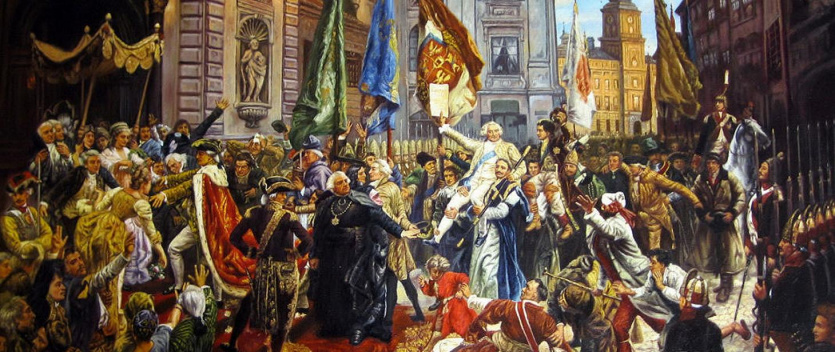We are approaching a spring weekend rich in historical anniversaries. Because of the pandemic, it is devoid of joint patriotic demonstrations. It is more a time for reflection on history.
The patriotic and festive weekend begins with International Workers' Solidarity Day, known as Labour Day, celebrated in Poland and around the world on May 1 for 130 years, as a symbolic commemoration of the workers' protests in Chicago, which were bloodily suppressed by the police. Today, the holiday arouses some controversy because of its post-war connotations.
- 'This holiday was appropriated by the communists during the communist era and is associated with marches, which were supposed to be an expression of support of the working class for those in power,' - explains prof. dr hab. Tadeusz Stegner from the Faculty of History of the University of Gdańsk. He reminds us, however, that in pre-war history it had a different meaning and tradition. - 'We forget, however, that during the partitions and in the Second Republic of Poland it was mainly organized by the left-wing independence movement, from which Józef Piłsudski originated, and in the 1980s many cities witnessed anti-government Solidarity countermarches.'
This year, May 3 marks the 230th anniversary of the adoption of the Constitution of 1791. - 'It was a constitution that changed the system of government of the Republic of Poland in the spirit of the Enlightenment. One of the first basic laws in the world,' stresses prof. Tadeusz Stegner. It was in force for only 14 months, overthrown by the Russian army and the Targowica Confederation. - 'It went down in history as one of the last attempts to save the collapsing Polish-Lithuanian state. It was immortalized in song and poetry, e.g. in Jankiel's concert from "Pan Tadeusz" by Adam Mickiewicz,' - adds the historian.
It is worth adding that during the communist era, the anniversary was forgotten and not welcomed by those in power. - 'On May 2, the flags displayed on May 1 were taken down so as not to honour the May 3 holiday with them,' recalls prof. Tadeusz Stegner. - 'The 3rd of May was one of the most important national holidays in the Second Republic and still is today, but we should also remember the 1st of May.'
Here it is also worth mentioning the contemporary history and our Gdańsk traditions of celebrating this holiday, forbidden in the People's Republic of Poland, and the manifestations held at the monument to King Jan III Sobieski in Gdańsk, dating back to the late 1970s. The place was chosen because of its proximity to St Mary's Church. After masses on patriotic anniversaries, demonstrators would gather at the monument, which referred to Polish history. The tradition of independent or opposition celebrations continued despite the actions of the police or ZOMO. In 1980, opposition activists such as Tadeusz Szczudłowski and Dariusz Kobzdej, who spoke in front of the monument, were arrested. In 1981, when Solidarity was operating legally, crowds gathered at the monument on May 3.
CONSTITUTION AND ABOUT THE CONSTITUTION ONLINE:
While reflecting on our history, you can check out the Royal Castle Museum's website to watch the film 'Secrets of Jan Matejko's painting 'The 3rd of May Constitution 1791', in which Tomasz Drapała, curator of the Royal Castle Museum, presents not only the Senators' Room, where the Parliament debates took place, but also well-known graphic representations of the enactment of the Constitution - the work of Jan Piotr Norblin, an eyewitness of the enactment of the document, and Jan Matejko's painting at the Royal Castle in Warsaw, which is a later and artistic vision of the historical event.
You may also become acquainted with the original of the 3rd of May Constitution, kept in the National Archives:

